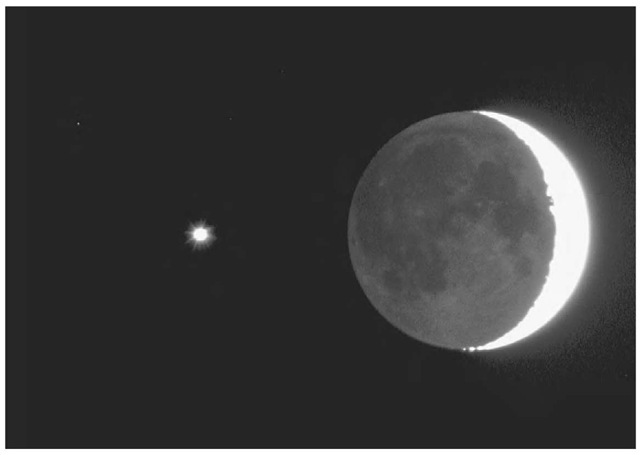A conjunction of the thin crescent moon and the planet Venus is one of the most striking sights in the sky—even visible within a modern city where the nighttime stars are all but forgotten. The spectacle of these two conspicu-ous objects hanging close together in a clear blue (and otherwise quite empty) sky, either in the early evening or the early morning, is likely to have given rise to what is one of the best known and most widespread celestial icons—the star and crescent symbol. In various forms it can be found on the flags of several modern Islamic countries, including Turkey, Pakistan, Algeria, and Azerbaijan; on modern coins from European countries such as Italy and Romania; on coins from ancient Rome, Greece, and Persia; and even in prehistoric rock art from various parts of the world.
The planet Venus (left) near a crescent moon. Earthshine illuminates the rest of the moon’s disk.
The star and crescent is mostly widely recognized in the modern world as a symbol of the Islamic faith, although its origin in this context is much older. It originally passed into several Islamic countries from the Ottoman Empire, and its use within what is now Turkey can be traced back to the third millennium b.c.e. Although it is often claimed that the symbol (in this context) owes its origins to a particular astronomical event, several different candidates have been proposed, and there is really no firm evidence to support any of them.
Elsewhere, where the symbol arose in quite independent cultural contexts, the motivation is most likely to have been one or more sightings of a conjunction of the crescent moon and Venus. This was an event that was spectacular but not unduly rare. And one of the most famous rock art designs in North America including a star and crescent, the so-called “supernova petroglyph” on a rock overhang in Chaco Canyon, New Mexico, is actually a set of four symbols used to mark a sun-watching station.

